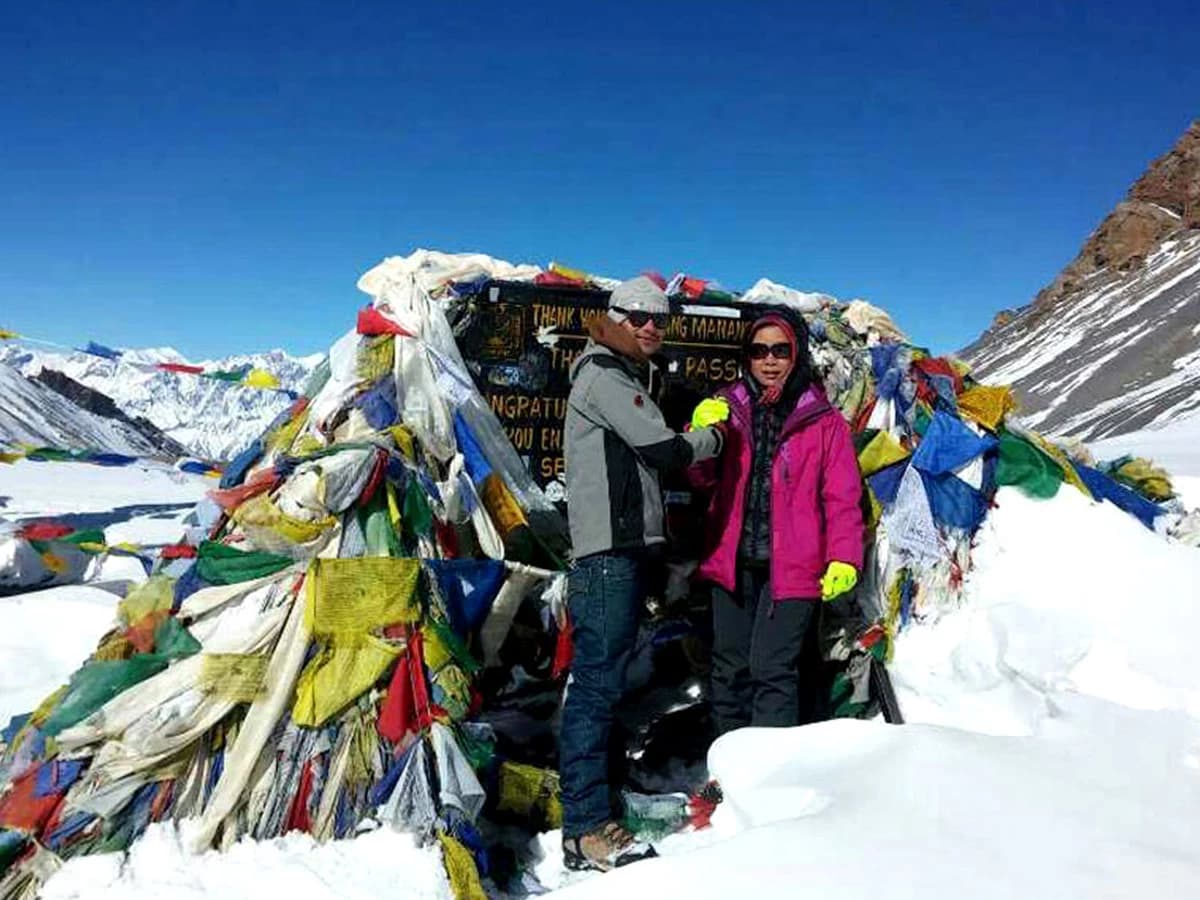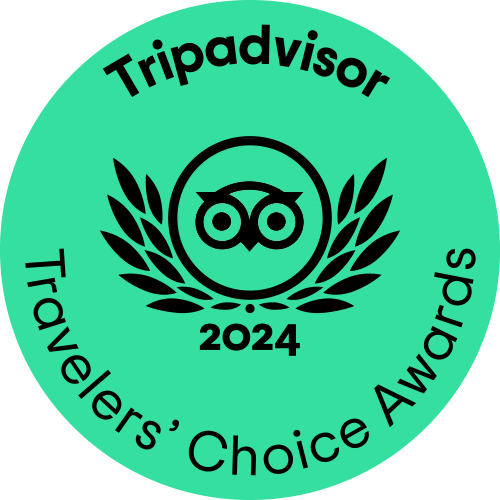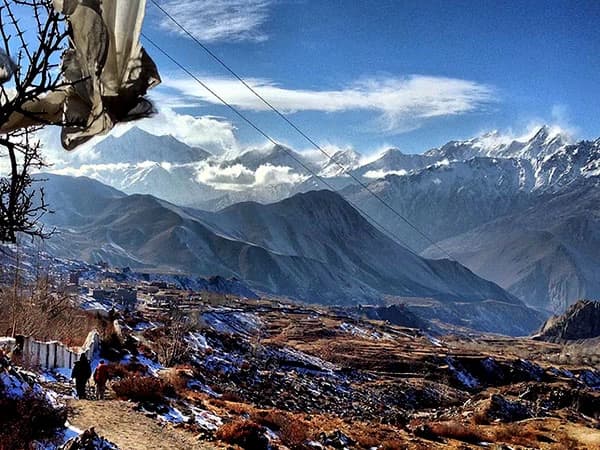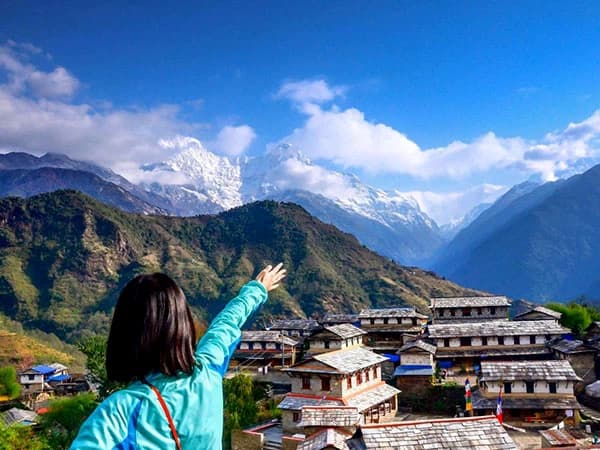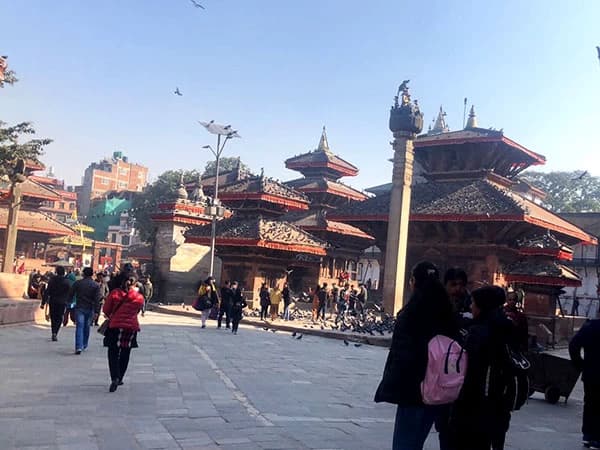Overview
The Annapurna Circuit Trek is one of the most popular trekking routes in the world. It covers almost 220 kilometers, 140 miles, and passes through welcoming villages, rolling hills, vast valleys, lush green forests, and hillside communities surrounded by the breathtaking Annapurna I, II, III, and north, Dhaulagiri, and Manaslu. This is a classic trekking route in Gandaki Province, in the Kaski and Manang District, home to the Gurung, Magar, and Tamang ethnic groups.
The Annapurna Circuit Trekking Trail passes through different terrain, varying from tropical terrain to alpine and rocky terrain in the lap of the mighty Himalayas. As we start our hike gradually to higher altitudes, the landscape transforms significantly, exposing the stunning vistas of majestic, sky-touching mountains and peaks, including Annapurna I (8,091 meters / 26,545 feet), Annapurna South (7,219 meters / 23,684 feet), Dhaulagiri (8,167 meters / 26,795 feet), Manaslu (8,163 meters / 26,763 feet), Machhapuchhre (Fishtail), and many other peaks over 6,000 meters.
The Annapurna Trekking Trail showcases the remarkable culture, norms, and values of the local community where the people of Gurung, Tamang, and Magar communities warm hospitality and authentic cuisine. Accommodation along the trek consists of tea houses and lodges run by the local people where trekkers can experience their local hospitality. While walking through the trekking trial you will be welcomed by the Tibetian gates Mane, Chhorten Gumba, including a prayer flag which relaxes your body and mind during the trekking. Annapurna Circuit is the complete package of adventure and thrilling experience because of its diverse landscape and terrain where different wildlife habitats in the Annapurna region such as rarely found Snow leopard, where wild animals like Himalayan Thar, Blue sheep, and Himalayan black bear, are the wildlife can be encountered during trekking time which makes Annapurna Circuit Trek more interesting to the adventure seeker and nature enthusiast.
Overall, the Annapurna Circuit Trek is a challenging and physical journey of self-exploring and endurance. The Annapurna Circuit Trek is a physical and mental journey and a transformative experience that serves a perfect cultural immersion, adventure, and stunning natural beauty, making it the best trekking destination for many adventure enthusiasts.
Highlights
- Breathtaking panoramic views of green lush forest, serene waterfalls, stream views, and the Marsyangdi river along the trekking trail.
- Many pristine glacier lakes, Gangapurna Lake, Green Lake, Ice Lake, and Tilicho Lake.
- Majestic scenes of the tenth-highest mountain Annapurna (8,091 meters/ 26,545 feet), Nilgiri, Thorung Peak, Dhaulagiri, Tukuche Peak, and Lamjung Himal.
- Diverse cultural & traditional experiences, by local ethnic communities like the Gurungs, and Tamangs,
- Visit the Bhraga village & largest Monastery in Manang.
- The most challenging part is crossing the Thorang La Pass (5,416 meters/ 17769 feet).
- Explore the Holy Muktinath Temple revered by the Hindu and Buddhist religions
- Soak in natural hot springs in Tatopani to relieve tired muscles.
Major Attraction
Stunning Annapurna Range
The Annapurna Circuit Trek offers stunning views of the massive Annapurna massif along the trekking trail. This massif features the tenth-highest mountain in the world, often called the "Killer Mountain," which triggers numerous avalanches due to significant snowmelt. If we're fortunate, we might even catch a live avalanche in the mountains while trekking.
Thorong La Pass
Thorong La Pass is a significant part of the Annapurna Circuit Trek, standing at an impressive altitude of 5,416 meters (17,769 feet), making it one of the most challenging and highest mountain passes in the world. Thorong La Pass offers breathtaking panoramic views of the Annapurna Massif, i.e. Annapurna I, II, III, IV, and north including Dhaulagiri, Manaslu, Gangapurna, Tilicho Peak, and Fishtail (Machhapuchhre).
Glacier Lakes
Tilicho Lake, the world’s highest-altitude lake, is also a major attraction. Where the Annapurna Circuit Trek offers many other crystal lakes, Tilicho Lake includes Gangapurna Lake, Kicho Ice Lake, and Green Lake, which make the trek more relaxing and peaceful with stunning picturesque views.
Cultural Interacts
Experiencing the vast culture and tradition of Manangi Gurung, Magar, and Tamang communities with their warm hospitality nature. During the trek, you will go along with many welcoming Tibetan gates, Mane walls, Chhorten, Gumba, and Prayer flags which make you feel more relaxed and peaceful.
Wildlife Encounters
Rarely, found Snow leopard, where wild animals like the Himalayan Thar, the Blue sheep, Musk deer, Himalayan black bear, Clouded leopard, Himalayan Serow, and the Muntjac are found, but it is rarely seen. There is a high chance of seeing the wildlife during the morning.
Natural Hot Spring water
Tatopani is a relaxing hot spring bath. Dipped in warm natural water, it heals tired muscles and relieves pain and tiredness. It is the ideal spot to relax and continue the trekking journey.
What can you expect from the Annapurna Circuit Trek?
The Annapurna Circuit Trek offers stunning mountain views, diverse landscapes, and rich cultural experiences. Expect challenging trails, crossing the Thorong La Pass (5,416m), visiting sacred sites like Muktinath Temple, and enjoying cozy teahouse stays. The trek promises adventure, breathtaking scenery, and a profound sense of achievement.
Who is suitable for the Annapurna Circuit Trek?
The Annapurna Full Circuit Trek is suitable for a wide range of trekkers, from seasoned hikers to adventurous beginners, Fitness Enthusiasts, Adventure Seekers, group trekkers, Nature Enthusiasts, and cultural explorers. The Annapurna Circuit is suitable for trekkers of various ages and genders, provided they are in good physical health and adequately prepared for trekking at high altitudes.
Why Trek with us?
- Experienced, knowledgeable local guides who ensure safety and provide cultural insights.
- Customized trips that cater to your interests, fitness level, and time frame.
- Emphasis on safety with thorough preparation, including proper acclimatization and emergency support.
- Immersive treks that respect local culture and nature, promoting responsible tourism.
- A dedicated team to assist you throughout the trek, ensuring a smooth and enjoyable adventure.


